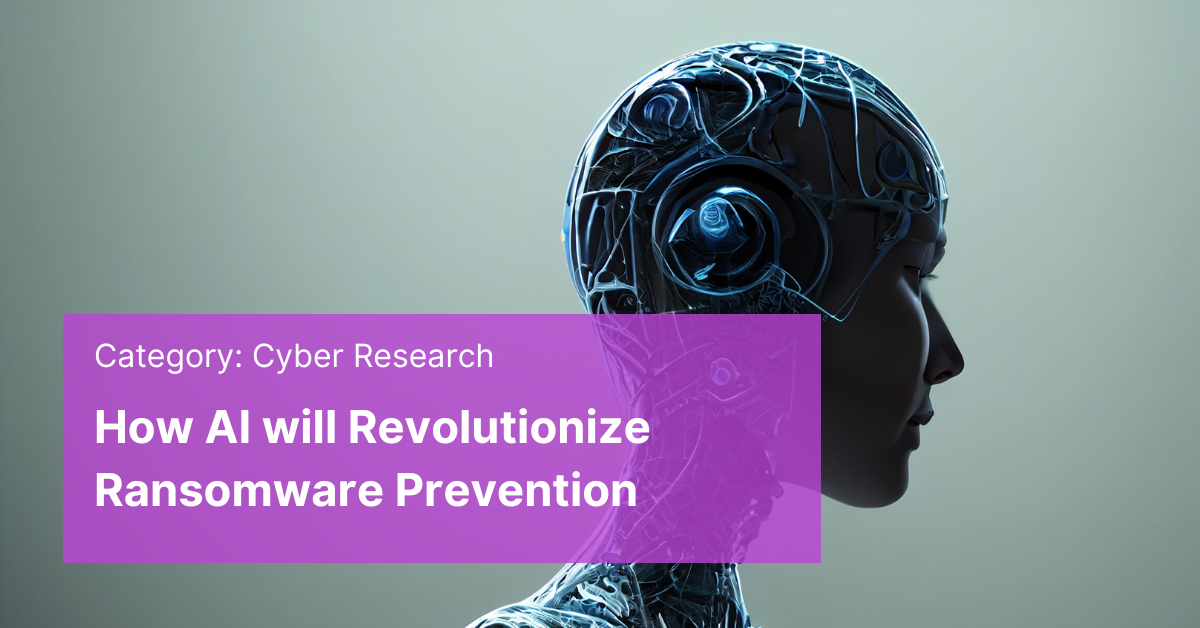Artificial intelligence (AI) holds the promise of transforming the landscape of ransomware prevention and the methods we employ to combat and address such attacks. Ransomware is a type of malware that encrypts a victim’s files and demands a ransom from the victim to restore access. It has become a major threat to individuals, businesses, and organizations, with the number of ransomware attacks increasing every year. The damages caused by these attacks can be significant, ranging from the cost of the ransom itself to the loss of important data and business interruption.
One way that AI can help prevent ransomware attacks is by detecting and blocking them before they can infect a system. Machine learning algorithms can analyze patterns and behaviors to identify potential threats and prevent them from entering a network. This is especially useful in the case of zero-day vulnerabilities, which are security weaknesses that are unknown to the software vendor and are therefore not yet patched. AI can detect these vulnerabilities and alert security professionals, allowing them to take proactive measures to protect against attacks.
AI can also be used to improve the accuracy and speed of threat detection. Traditional security systems rely on pre-defined rules and signatures to identify threats, which can be time-consuming and may miss new or unknown threats. AI, on the other hand, can analyze and learn from large amounts of data to identify patterns and behaviors that may indicate an attempted ransomware attack. This allows AI to detect threats faster and more accurately than traditional security systems, improving the overall effectiveness of ransomware prevention.
Another way that AI can be used to prevent ransomware attacks is through the use of virtual assistants. These assistants can monitor and analyze user behavior, looking for anomalies that may indicate an attempted ransomware attack. For example, if a user suddenly starts accessing a large number of files or attempting to download suspicious software, the virtual assistant can alert the security team and block the activity. Virtual assistants can also be used to provide users with real-time guidance and recommendations on how to avoid ransomware attacks, helping to educate and empower users to protect themselves and their organizations.
AI can also be used to improve incident response in the event of a ransomware attack. When a system is infected, it can be difficult for security professionals to determine the extent of the damage and which files have been encrypted. AI can help by analyzing the system and identifying the impacted files, allowing the security team to quickly determine the extent of the attack and take appropriate action. This can significantly reduce the time and resources required to respond to a ransomware attack, minimizing the disruption and damages caused by the attack.
In addition to these prevention and response measures, AI can also be used to predict and prevent future ransomware attacks. By analyzing past attacks and identifying patterns and trends, machine learning algorithms can predict where future attacks are likely to occur and take proactive measures to prevent them. This could involve strengthening security measures in areas that are identified as high-risk or implementing additional controls to prevent known attack vectors.
One potential challenge with using AI to prevent ransomware attacks is the need for high-quality data. AI algorithms rely on large amounts of data to learn and improve, and if the data is not accurate or comprehensive, the algorithms may not be able to effectively detect and prevent attacks. It is therefore important for organizations to ensure that they have access to high-quality data and to continuously update and improve their data sets.
Another challenge is the potential for bias in AI algorithms. If the data used to train the algorithms is biased, the algorithms may also be biased and may not accurately detect and prevent attacks. It is important for organizations to be aware of this potential issue and to take steps to ensure that their data is diverse and representative of the population they are targeting.
Despite these challenges, the use of AI in ransomware prevention is an exciting and promising development that has the potential to transform the future of cybersecurity.
At Cynergy we are training AI models with supervision, to avoid biased judgment and adding our corrections when needed to provide quality data for training, this way we keep our clients safe and prevent potential breaches.






